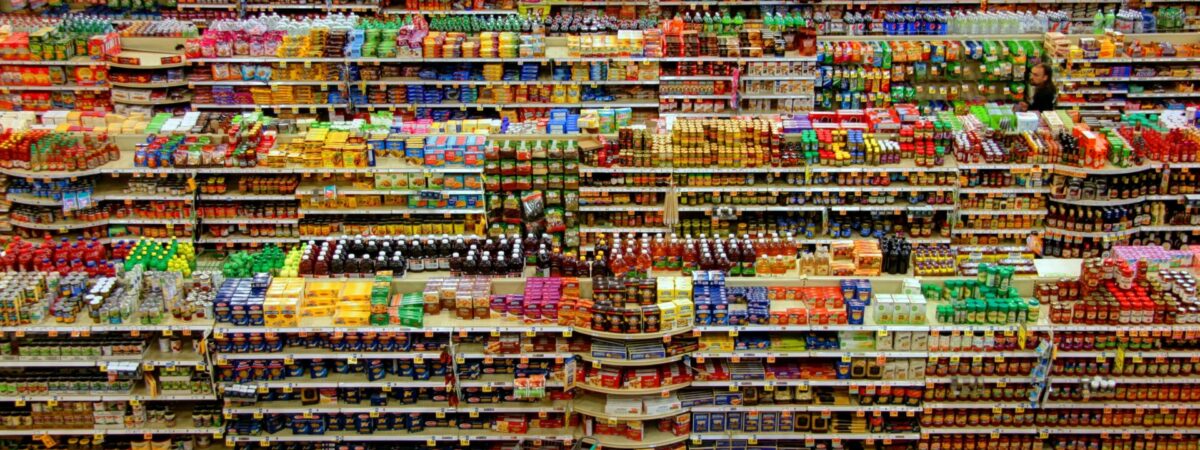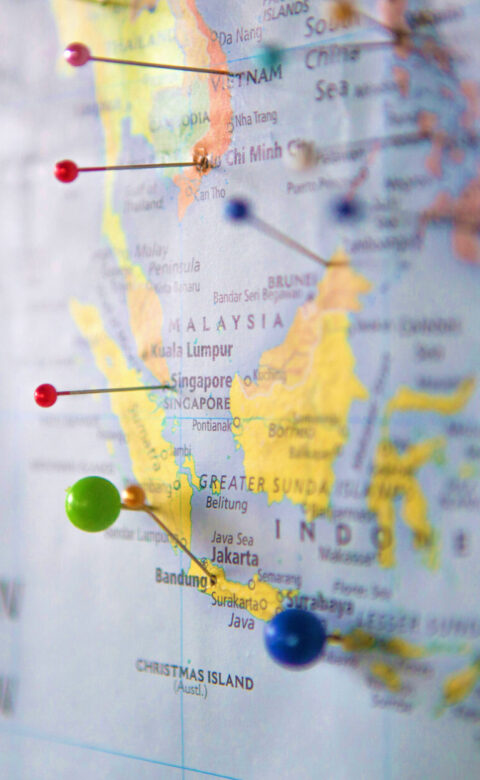Though I do love to browse through a local outdoor market with all its sensory enjoyments, one of my favourite things in a new destination is a visit to the supermarket. Strolling through miles of fluorescent-lit aisles as a travel activity may seem tedious to some, but for me they’re the most fascinating microcosms of a place and its people.
Grocery stores not only show us how people shop but also give an indication of so many other things. A sense of abundance or scarcity; an idea of whether there’s freedom of choice or a lack thereof. They illustrate a culture’s relationship to its food; show how eating it or cooking it is woven into the day-to-day fabric of existence; and highlight how it’s produced, procured and prepared.
Meanwhile, the interiors of supermarkets the world over tell us the story of what’s going on outside their doors. What’s on (or missing from) the shelves can reflect everything from a booming economy to tough financial times and from seasonal bounty to periods of flooding or drought. At the same time, we can see the effects of less localised factors that still have an impact on the neighbourhood and its inhabitants, like rising energy costs or global supply chain issues.
Supermarkets may now be the norm for many shoppers, but historically the earliest food retailers were peddlers who carted their goods through the streets. In time, this commerce moved into shops — sometimes as a general store but frequently specialised for a specific provision, like the butcher, baker, or greengrocer — where customers indicated their choice and a clerk behind a counter plucked it from showcases or shelves to make up their order. While the interaction was sociable, the time-consuming process of a big shop could take up the best part of a day.
But beginning in the early 20th century, this rather leisurely style of service began a transformation into premises with dedicated areas for all the different categories of foodstuffs under one roof, where much of the physical separation between consumer and product disappeared. Shops got bigger and shopping got faster as the self-service markets that we know today gained global prominence.
A bit like shoppers in the mid-1900s must have felt on their first forays into the brave new world of supermarkets, my first visit to the grocery store in a new place is both excruciating and exhilarating. Excruciating in how many hours I could spend admiring what’s on display; exhilarating as I delve into enigmatic refrigerated cabinets and wonder what’s behind puzzling packaging. That said, tools like Google Translate can make this much easier, for those who don’t fancy being completely in the dark about their mystery purchases. I, however, like a surprise more often than not.
In any case, whether I’m prepping for a picnic in a nearby park or stocking the refrigerator in our accommodation, it’s best for me to make these maiden voyages into the food unknown on my own… anyone with me will just be exhausted by the time we reach the tills.
Speaking of the tills, that brings up another great thing about supermarkets: even if I’ve only just arrived in town, they’re an instant way to engage with people. Whether it’s at the cash desk or elsewhere, I can use whatever bits of the native language I possess, even if at first that’s limited to hello/goodbye or please/thank you. The most basic encounters can provide a feeling of connection.
However before we get as far as the checkout, as we make our way through the store many things are revealed about local food and how it’s sold. Is it mass-produced, plastic-wrapped and pre-packed? Are all the products already individually weighed out and portioned, or is some of that done for us? Are meats, poultry and fish pre-butchered and ready to cook, or as we browse are we more likely to find something with feathers, scales or eyes gazing back?
We can also gain an appreciation for a place’s — and a retailer’s — priorities. Does sustainability seem to be high on the list, with reusable carrier bags and compostable sacks for fruit and vegetables front and centre? Do we note a culture of shoppers who all seem to bring their totes with them? Is there loads of unnecessary excess packaging? Are regional specialities with low food miles easy to find, and can we tell whether they’re sourced from ethical and responsible producers?
Wherever possible, I like to peruse the offerings of both big supermarkets and smaller independents — not only for the different selection, but for different experiences. And while spending your money in a large, potentially multi-national chain establishment is still ultimately good for the host community’s economy, your purchases can be that much more meaningful and have a greater impact at the non-chain local alternative.
No matter where I end up, this is also an excellent way to pick up some truly authentic souvenirs representing the taste of a destination. Whether it’s a colourful tin of sardines in Porto, Portugal, a delicate little package of Calisson d’Aix in Nice, France or a jug of the finest amber Canadian Maple Syrup, each is a delicious memory in portable form.
If we had any doubt about how our taste memories connect to where they’re made, as outlined in Science Daily, research has shown ‘a functional link between the brain region responsible for taste memory and the area responsible for encoding the time and place we experienced the taste’. These experiences are truly engraved upon us.
So while travel food experiences allow us to literally internalise other cultures, edible mementoes help us share our joy of culinary discoveries with the people back home, not to mention filling our kitchen larder. In feeding the local economy through the benefits of our purchases, we can also bring back these supermarket-sourced delights as a lasting reminder of the travel moments that nourish our souls.







